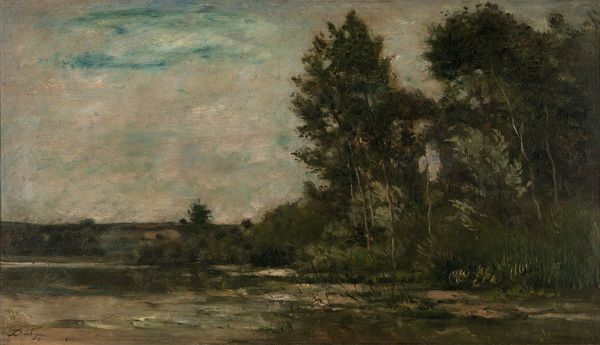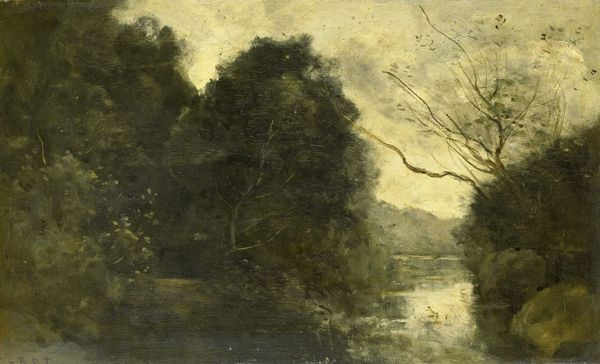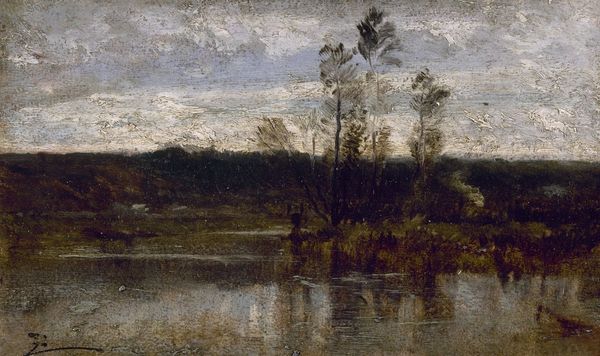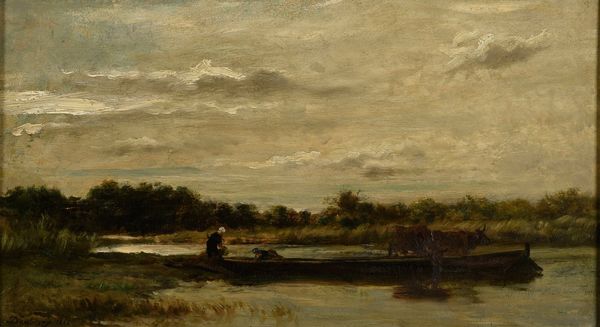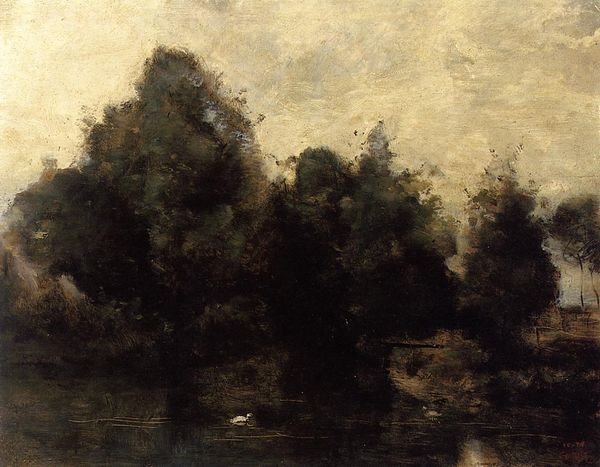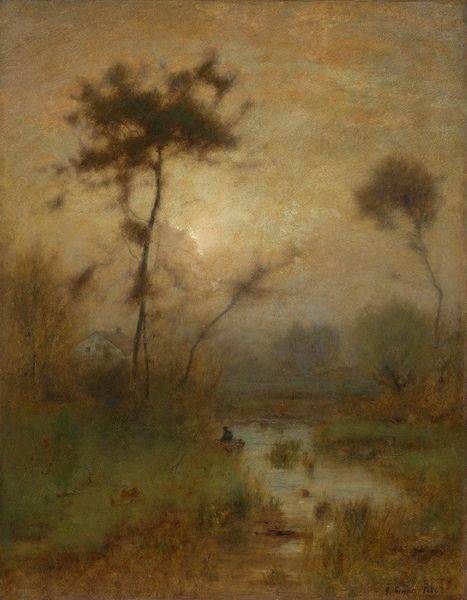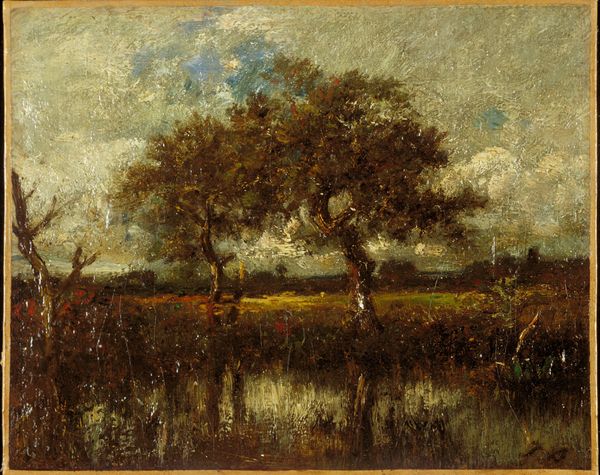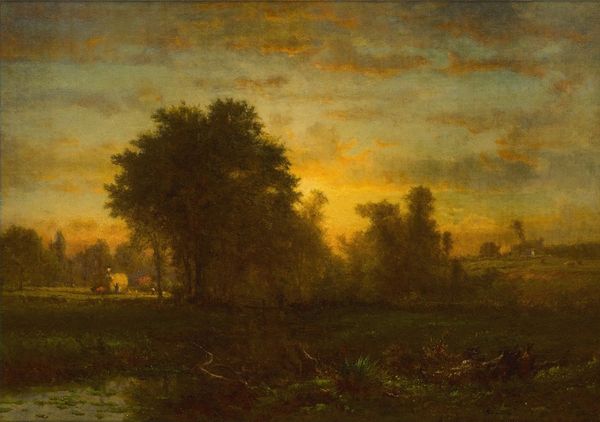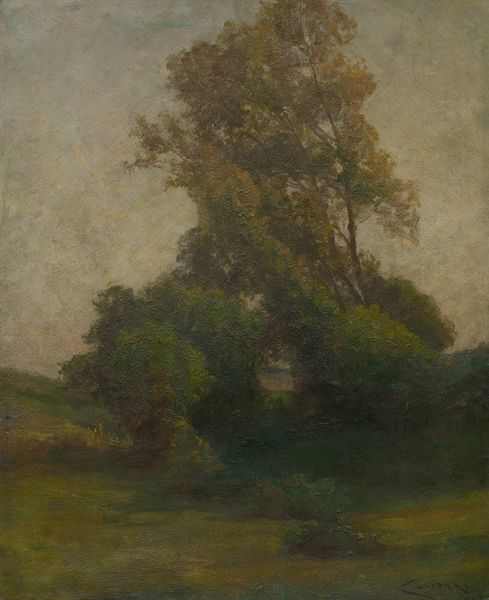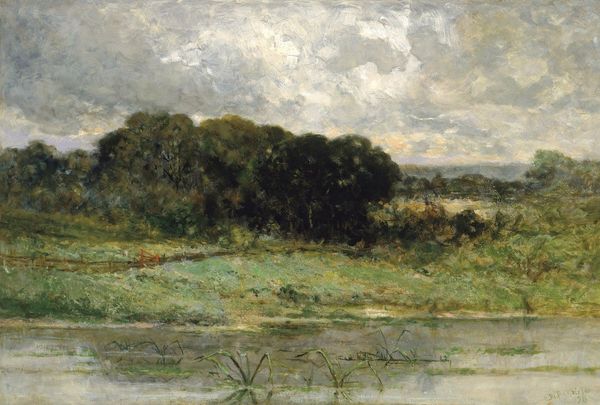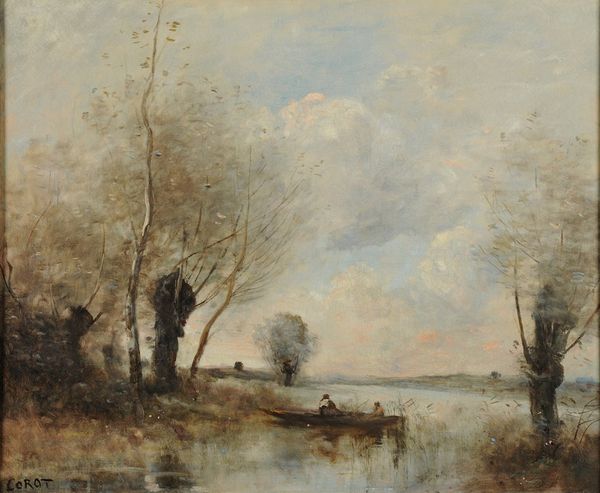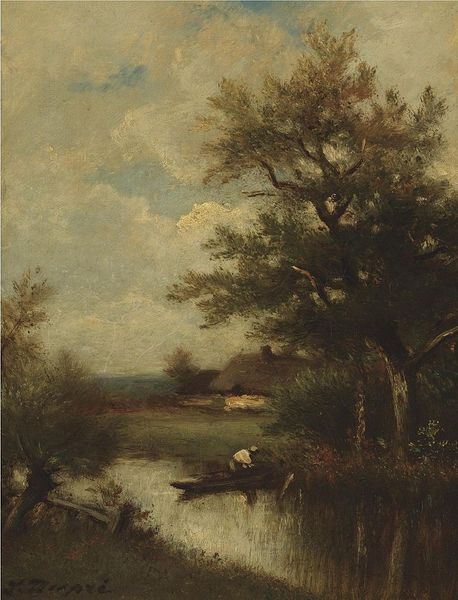
plein-air, oil-paint
#
plein-air
#
oil-paint
#
landscape
#
oil painting
#
romanticism
#
watercolor
#
realism
Dimensions: 21.7 × 27 cm (8 9/16 × 10 5/8 in.)
Copyright: Public Domain
Curator: As we look at "Landscape," dating to around 1850 by Theodore Rousseau, notice how Rousseau's work exemplifies the Romantic sensibility towards nature, rendered with oil paints. What's your immediate sense of this work? Editor: I find it rather melancholic. There's a muted palette, predominantly greens and browns, which gives it a somber tone. The reflections in the water feel like looking into a deeper, perhaps troubled, self. Curator: That melancholy is powerful. Rousseau, working during a time of social upheaval in France, imbued his landscapes with a sense of empathy for the dispossessed. The landscape becomes a stand-in for the human condition. How do you see symbols functioning here? Editor: The overarching symbol for me is water: that pool becomes like a mirror reflecting more than trees and clouds. It captures our fears of nature and our inner selves, which might tie in with Romantic ideals on landscape at the time. Curator: Exactly, but consider that the so-called untamed spaces offered refuge from rapid industrialization. Rousseau’s dedication to plein-air painting--directly from nature—could be read as resistance to capitalist progress, focusing on agrarian imagery. Editor: But perhaps the looming trees can serve a dual meaning then: as an imposing force reflecting our small role in a big world, yet a natural refuge away from artificial urbanized structures? It's not fully positive or negative. Curator: Rousseau's technique contributes too. See the brushstrokes: dense and loaded, a texture building the raw presence of nature rather than some idyllic vista. The earthiness connects, viscerally, with lived experiences in the landscape. There are similarities, for example, between the lives of marginalized workers and untamed wild space as perceived and depicted. Editor: Yes, his deliberate manipulation of light gives depth to what would otherwise appear like just another picturesque scenery. This is more brooding than blissful. In the context of symbolism and personal emotions, I also want to acknowledge the role it may play regarding collective or historical trauma within a landscape. It also brings it up to more contemporary settings, where marginalized identities search to heal from natural spaces and create personal narratives through reconnection. Curator: Well said. Looking at this, I'm left considering how landscape, historically gendered as female, continues as a canvas to explore cultural anxieties regarding class and industrial progress. Editor: I'm reflecting now on how an artwork of its time still sparks narratives relating not only through artistic styles, but emotions, of today's marginalized societies seeking healing and resilience.
Comments
No comments
Be the first to comment and join the conversation on the ultimate creative platform.

